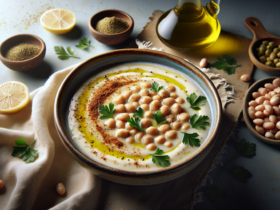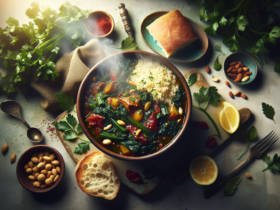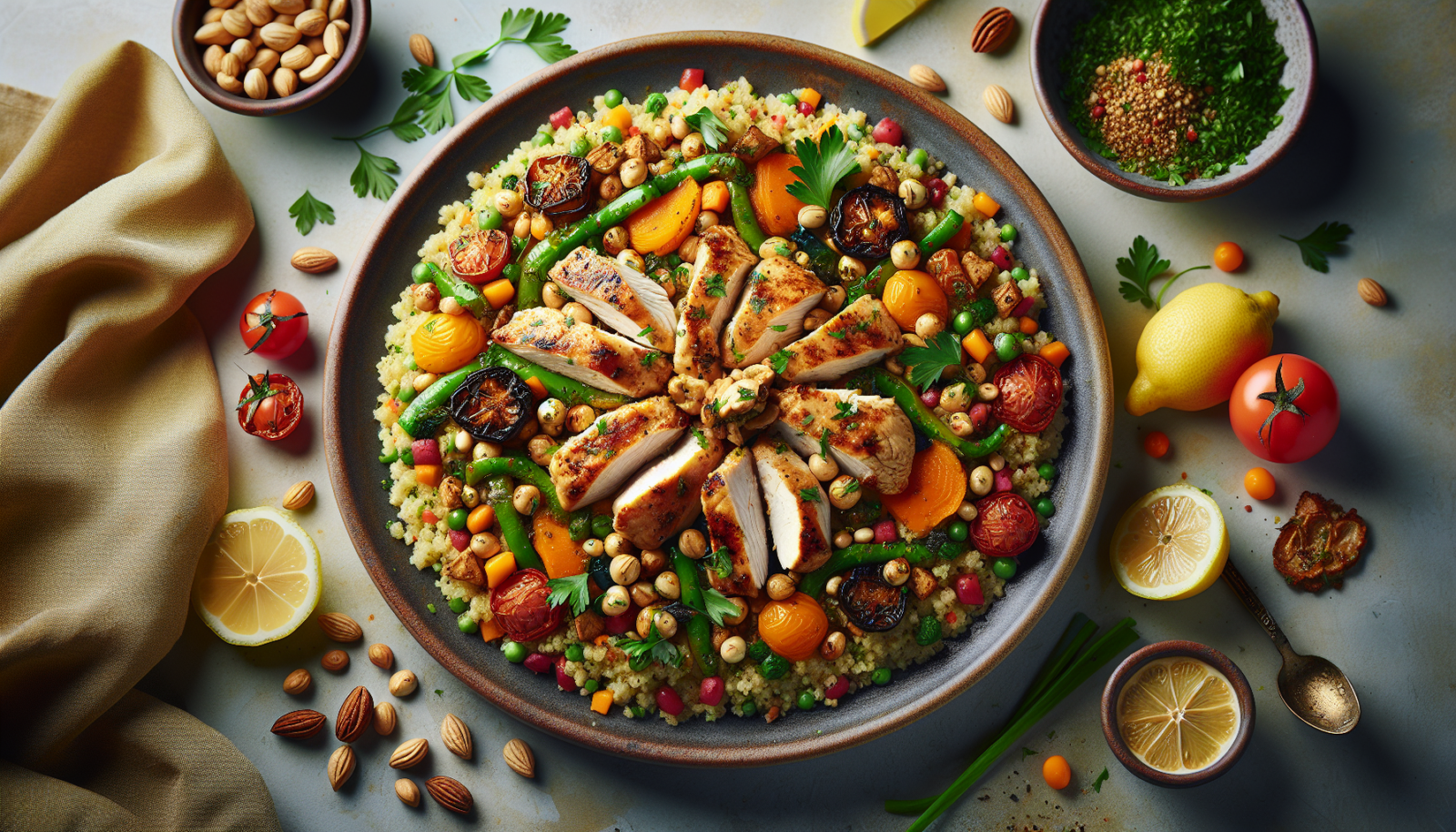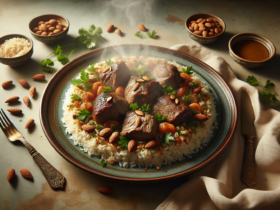The aroma of spices fills the air as you step into a Palestinian kitchen preparing a beloved traditional dish—maftoul. Crafted from hand-rolled wheat grains, spiced broth, tender chicken, and fresh vegetables, this hearty meal brings together family and friends around the table. Every bite of maftoul tells a story, a blend of flavors that evokes nostalgia and warmth, reminding us of home and heritage. Whether served during festive occasions or casual family gatherings, this dish embodies the essence of Palestinian hospitality, where every plate is a labor of love.
Maftoul has deep roots in Palestinian culinary traditions, often referred to as the ‘couscous of the Levant.’ Its origins can be traced back centuries, believed to have been influenced by North African cultures. Traditionally, the wheat grains are hand-rolled and steamed, creating a unique texture that sets it apart from other grain dishes. Over time, this dish has evolved, with various regional variations incorporating local ingredients and spices, reflecting the rich agricultural bounty of the land.
What makes maftoul truly unique is its preparation method and the love that goes into crafting the wheat grains by hand. Unlike regular couscous, maftoul is larger and denser, offering a delightful chewiness that pairs beautifully with the tender chicken and vibrant vegetables. The combination of spices used in the broth—cumin, coriander, and cinnamon—infuses the dish with a depth of flavor that transports you straight to the heart of Palestinian kitchens.
The Must-Do’s
To ensure authenticity in your maftoul, it’s crucial to follow specific steps. First, properly brown the chicken to lock in flavors before simmering it in the broth. Using homemade broth enhances the taste significantly; if that’s not possible, opt for high-quality store-bought options. Lastly, allow the maftoul to steam gently so it absorbs the flavors of the broth without becoming mushy. These techniques are essential to achieving the right texture and depth of flavor.
Experience the rich flavors of Palestine with this traditional maftoul, made from hand-rolled wheat grains, tender chicken, and aromatic spices. Store leftover maftoul in an airtight container in the fridge for up to 3 days. Reheat gently on the stovetop or in the microwave.
In a large pot, heat olive oil over medium heat. Add the chopped onions and sauté until they are translucent.
Add the minced garlic, stirring for about 1 minute until fragrant. Then, add the chicken pieces, browning them on all sides.
Pour in the water or chicken broth, and bring it to a boil. Skim off any foam that rises to the surface.
Add the carrots, zucchini, bell pepper, cumin, coriander, cinnamon, salt, and black pepper. Reduce heat to low, cover, and let simmer for about 45 minutes to 1 hour, until the chicken is cooked through and tender.
While the chicken is cooking, rinse the maftoul under cold water. In a separate pot, bring 2 cups of water to a boil. Add the maftoul, cover, and reduce heat to low. Cook for about 20 minutes until the grains are fluffy.
Once the chicken is done, remove it from the pot and set aside. If using chickpeas, add them to the broth and let them simmer for an additional 10 minutes.
To serve, plate the cooked maftoul, top with the chicken pieces, and ladle the vegetable broth over everything. Garnish with fresh herbs.
Ingredients
Pro Tips
For an elevated maftoul experience, consider adding dried fruits such as apricots or raisins for a touch of sweetness. If you prefer a vegetarian version, substitute the chicken with hearty vegetables like eggplant and mushrooms, and use vegetable broth. Avoid overcooking the maftoul; it should remain fluffy and distinct. A common mistake is not allowing the grains to rest after cooking, which can lead to clumping.
Serving Suggestions
Maftoul is best served hot, directly from the pot. Pair it with a side of creamy yogurt or a fresh tabbouleh salad for a refreshing contrast. For those who enjoy a kick, a drizzle of spicy harissa sauce can elevate the dish further, making for an unforgettable meal.
Garnishing & Presentation
When plating maftoul, a sprinkle of freshly chopped herbs adds a pop of color and freshness. Consider garnishing with toasted pine nuts or slivered almonds for added texture and a nutty flavor. Serve it in a large communal dish, encouraging everyone to dig in—a true reflection of Palestinian hospitality.
البيت بيتك والملح ملحك
This Palestinian proverb translates to ‘Your house is your home, and the salt is yours.’ It signifies the importance of hospitality and sharing food, reflecting the essence of Palestinian culture where sharing meals fosters connections and strengthens bonds.
As I reflect on my childhood, the memories of my grandmother’s kitchen come rushing back, where the scent of simmering maftoul would greet me at the door. Each family gathering was marked by laughter, stories, and the comforting embrace of this dish. Preparing maftoul is not just about following a recipe; it’s about preserving traditions and sharing love through food. I hope this recipe brings joy and connection to your table, just as it has in mine.
Equipment Needed
- Large pot
- Cutting board
- Chef’s knife
- Measuring cups and spoons
- Wooden spoon
- Serving plates
Cooking Techniques
Sautéing
Cooking food quickly in a small amount of oil over medium-high heat to enhance flavors.
Simmering
Cooking food gently in liquid at a low temperature to develop flavors and tenderness.
Serving Suggestions
- Serve with a side of yogurt or a fresh salad.
- Pair with a tangy tahini sauce for added flavor.
Garnish Suggestions
- Sprinkle freshly chopped parsley or cilantro on top before serving.
- Add a few toasted pine nuts for extra crunch.




![[object Object]](https://haboba.com/wp-content/uploads/2025/03/Refreshing-Parsley-and-Bulgur-Salad-with-Lemon-Dressing-280x210.png)









Leave a Review